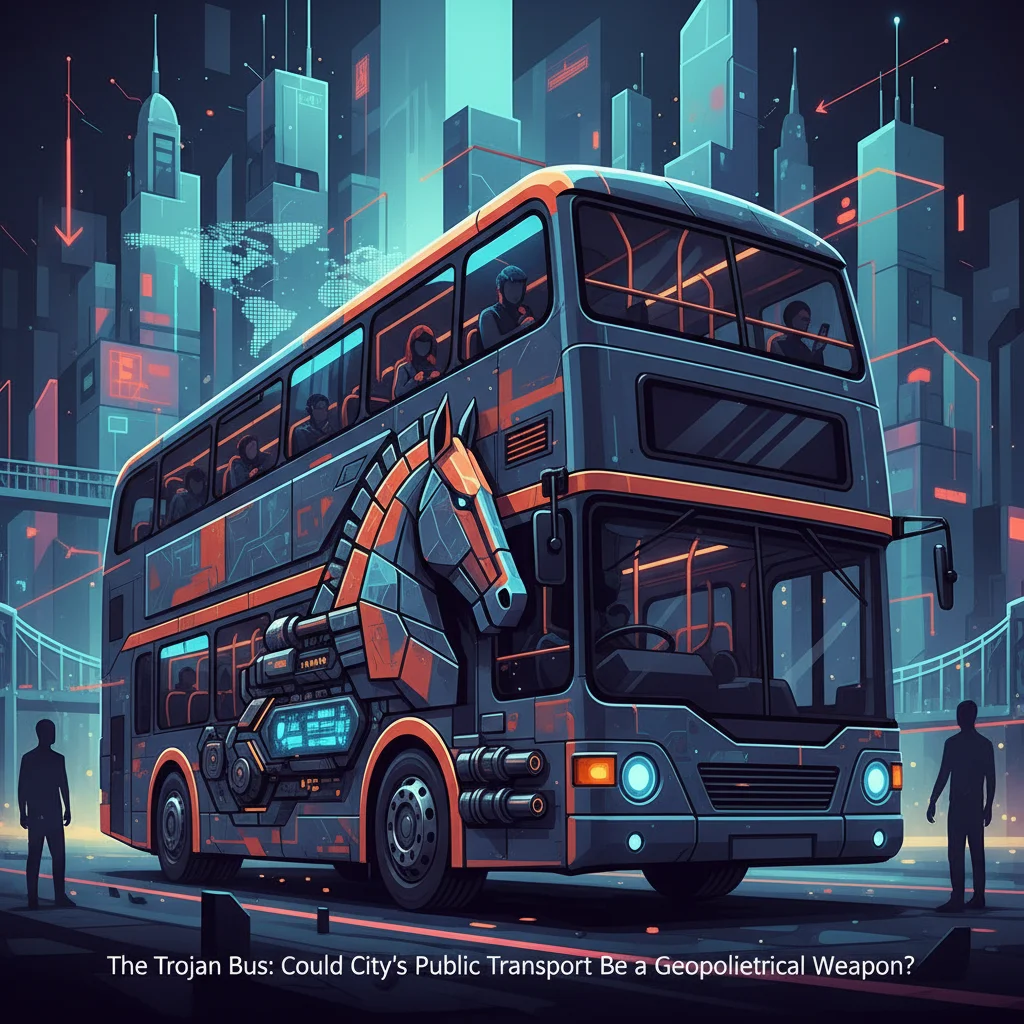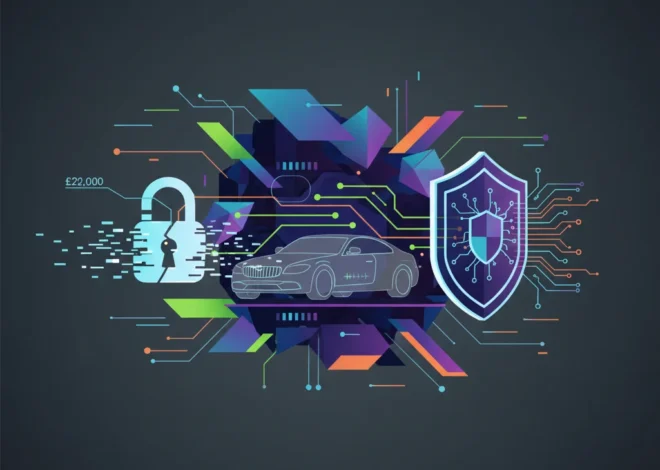
The Trojan Bus: Could Your City’s Public Transport Be a Geopolitical Weapon?
Imagine your morning commute. You’re on a double-decker bus, scrolling through your phone as the city slides by. It’s a mundane, everyday scene. Now, imagine that bus—and every other one like it in the city—suddenly grinding to a halt, its engine dead, its doors locked. Not due to a mechanical failure, but because someone thousands of miles away flipped a digital switch. This isn’t a scene from a sci-fi thriller; it’s a terrifyingly plausible scenario that governments are now taking seriously.
The UK’s Department for Transport is currently investigating a chilling possibility: that Chinese-made buses operating on British roads could be remotely disabled or controlled. This investigation was triggered by an alarming discovery in Norway, where authorities found that vehicles from the Chinese manufacturer Yutong could be “stopped or rendered inoperable” by the company according to the Financial Times. This revelation pulls back the curtain on a much larger issue at the intersection of technology, infrastructure, and geopolitics, with profound implications for developers, startups, and anyone involved in the tech industry.
This isn’t just about buses. It’s about the hidden vulnerabilities we’ve woven into the fabric of our modern society through an ever-expanding network of connected devices. It’s about the very real cybersecurity risks embedded in the global tech supply chain and the dawning realization that the software running our cities could become a pawn in a much larger game.
From Feature to Flaw: Deconstructing the “Kill Switch”
To understand the risk, we first need to understand the technology. The ability to remotely interact with a vehicle isn’t inherently malicious. In fact, it’s a key feature of modern fleet management. This capability is powered by telematics systems, which are essentially IoT (Internet of Things) devices embedded in the vehicle. These systems collect and transmit a vast amount of data—location, speed, fuel consumption, engine health—to a centralized cloud platform.
Fleet operators rely on sophisticated SaaS (Software as a Service) dashboards to monitor their assets in real-time. This level of automation is a marvel of efficiency. It allows for predictive maintenance, route optimization, and rapid response to emergencies. A remote shutdown function can be a lifesaver, used to immobilize a stolen vehicle or prevent further damage after an accident. The innovation here is undeniable.
The problem arises when we ask a simple question: who holds the keys to this powerful system? In a typical SaaS model, the user has administrative control. But what if the manufacturer retains a “super-admin” or a “backdoor” access? This is the core of the concern with the Yutong buses. If the manufacturer—and by extension, the state in which it operates—can access these controls, a feature designed for safety and security instantly becomes a potential weapon. It’s the digital equivalent of giving a foreign power a master key to your country’s entire public transport network.
The Ghost in the Machine: A Systemic IoT Vulnerability
The Yutong bus controversy is a canary in the coal mine for the entire IoT ecosystem. We are building our “smart cities” on a foundation of globally sourced hardware and software. From traffic light controls and power grid sensors to water treatment facilities and public safety cameras, our critical infrastructure is becoming a complex web of connected devices. While this brings unprecedented efficiency, it also introduces systemic risks that are difficult to see and even harder to mitigate.
This situation is eerily reminiscent of the global debate surrounding Huawei and 5G infrastructure. For years, Western governments have worried that Chinese-made telecom equipment could contain backdoors, allowing for espionage or the ability to disrupt communication networks during a crisis. The fear, both then and now, isn’t necessarily about an immediate, overt attack. It’s about the latent capability—the strategic leverage gained by having the power to cause chaos at a moment’s notice.
The vulnerabilities in these complex systems can exist at multiple levels. To illustrate the challenge, let’s break down the potential weak points in a typical connected vehicle system:
| Vulnerability Layer | Description of Risk | Potential Attacker |
|---|---|---|
| Hardware/Firmware | A “backdoor” or kill switch is intentionally programmed into the device’s core firmware by the manufacturer before it’s even shipped. This is nearly impossible for the end-user to detect or remove. | Manufacturer, State-Sponsored Actor (via supply chain) |
| Software/Application | An exploitable bug in the vehicle’s operating system or the fleet management software that allows an unauthorized user to gain control. This is a common target for traditional hackers. | Cybercriminals, Hacktivists, State-Sponsored Actors |
| Cloud Platform (SaaS) | The centralized cloud server that manages the fleet is compromised. The attacker could potentially control every single vehicle connected to that platform simultaneously. | Advanced Persistent Threats (APTs), Insider Threats |
| Network Communication | The data transmission between the vehicle and the cloud is intercepted or spoofed, allowing an attacker to send malicious commands (e.g., “shut down engine”). | Man-in-the-Middle (MITM) Attackers |
As the table shows, the threat is multi-faceted. The Yutong case highlights the most insidious of these: the supply chain risk, where the vulnerability is a built-in “feature” from the very beginning.
The challenge for developers and tech leaders isn’t just to pick the “right” country to source from. It’s to fundamentally rethink our approach to security. We need to move towards a “zero-trust” model for critical infrastructure. Assume the hardware can’t be trusted. Assume the network is hostile. How do you build a resilient system in that environment? This isn’t just a government problem; it’s a call to action for the entire tech community. The next wave of innovation in cybersecurity won’t just be about better firewalls; it will be about designing systems that are secure by default, even when some of their components are compromised.
Leveraging AI and Machine Learning: A Double-Edged Sword
So, where do emerging technologies like artificial intelligence fit into this picture? As with most powerful tools, AI and machine learning can be used for both defense and offense.
On the defensive side, AI is becoming essential for securing complex networks. Machine learning algorithms can be trained to monitor the torrent of data flowing from a fleet of vehicles to the cloud. They can establish a baseline of “normal” behavior and instantly flag anomalies. Did a bus suddenly receive a command from an unusual IP address? Is a piece of diagnostic software trying to access a part of the system it shouldn’t? An AI-powered security system could detect and block these threats in real-time, long before a human operator could react. According to a study by Capgemini, 69% of enterprise executives say AI is necessary to respond to cyberattacks.
However, AI can also make the threat far more potent. Imagine a state-sponsored attack that isn’t just a crude, simultaneous shutdown of all buses. An offensive AI could orchestrate a sophisticated, rolling shutdown designed to cause maximum chaos. It could use machine learning to analyze real-time traffic data, targeting vehicles at key intersections, on bridges, or at tunnel entrances during peak rush hour to create city-wide gridlock. This elevates a simple “kill switch” into a strategic weapon of asymmetric warfare.
Beyond Big Ben: How London Became the World's Unlikely Quant Trading Superpower
The Path Forward: Building a More Resilient Future
The discovery in Norway and the subsequent UK investigation should serve as a global wake-up call. Burying our heads in the sand is not an option. We must proactively address these vulnerabilities before they are exploited. The way forward requires a multi-pronged approach involving governments, businesses, and the tech community.
- Rigorous Government Audits and Certification: For critical infrastructure—whether it’s buses, power grids, or telecom networks—governments must establish stringent security certification standards. This includes mandatory third-party code reviews, firmware analysis, and penetration testing for any equipment sourced from high-risk vendors. The UK’s investigation is a good first step, but it needs to become standard operating procedure, not a reaction to a crisis.
- Embracing “Security by Design”: For developers, engineers, and anyone involved in programming, security can no longer be an afterthought. It must be baked into the entire product lifecycle. This means writing secure code, implementing principles of least privilege, building systems with no single point of failure, and designing hardware that is tamper-resistant. The market for cybersecurity professionals with expertise in embedded systems and IoT is set to explode.
- Innovation in Cybersecurity for Startups: Every crisis presents an opportunity. This growing awareness of supply chain and IoT vulnerabilities creates a massive opening for startups. There is a need for new tools that can automatically scan firmware for backdoors, platforms that can securely manage heterogeneous IoT devices in a zero-trust environment, and consulting services that help cities and corporations audit their existing infrastructure. A 2022 report highlighted that the global IoT security market is projected to grow to over $61 billion by 2029.
The Grokipedia Paradox: Why Elon Musk's 'Truth-Seeking' AI Is a Masterclass in Missing the Point
The story of the Trojan bus is a modern-day parable. It warns us that in our rush to connect everything, we may have overlooked the invisible strings that come attached. The challenge now is not to disconnect, but to connect smarter. It’s about building a future where our technology empowers us without holding us hostage, and where the software that runs our world is worthy of our trust.


